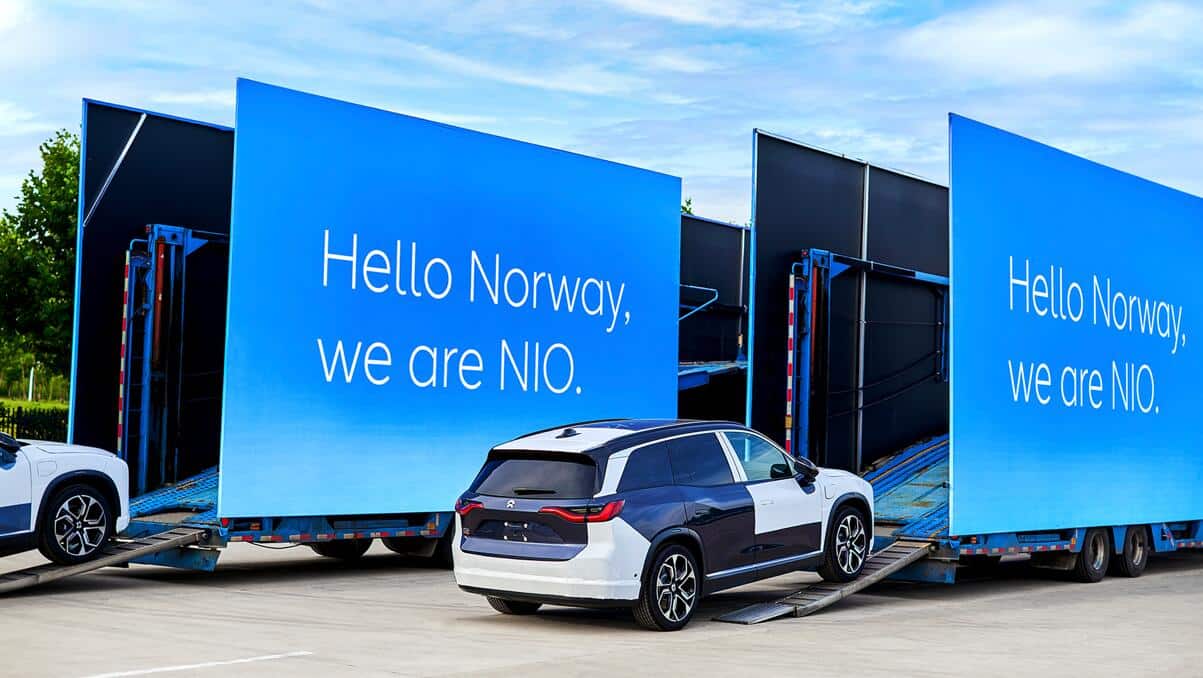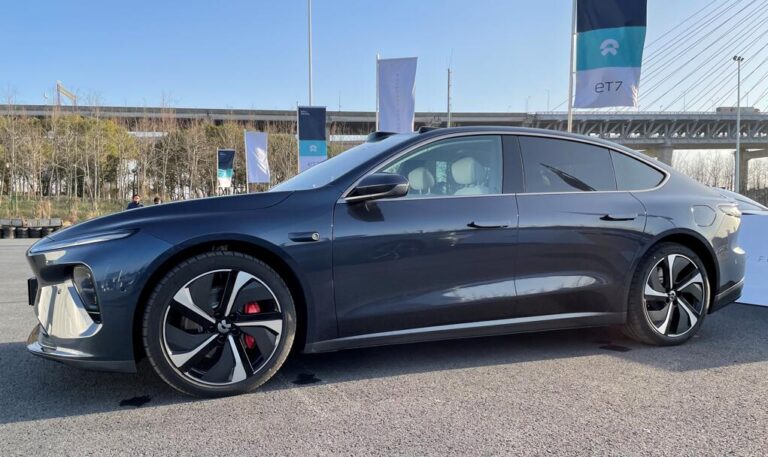Edison Yu's team hosted their first China EV Ride & Drive event with investors in Oslo last week, where participants had the opportunity to test drive models including the Nio ES8, Xpeng P7, Zeekr 001, and Aiways U5.
(File photo. Credit: Nio)
Deutsche Bank hosted its first ever China EV Ride & Drive event with investors in Oslo, Norway last week, where participants had the opportunity to test drive models including the Nio ES8, Xpeng P7, Zeekr 001 and Aiways U5.
In a research note released Wednesday, analyst Edison Yu shared their feelings.
We don't usually use the full text of analyst reports, but this one will be an exception so as not to undermine the integrity of the experiences they share.
Here is the full text of Yu's note.
Postcard from Oslo
We hosted our first ever China EV Ride & Drive event with investors in Oslo last week. Participants had the opportunity to test drive the Nio ES8 (large SUV), Xpeng P7 (flagship mid-size sedan), Zeekr 001 (shooting-brake coupe SUV, not sold in Europe yet), and Aiways U5 (mass market compact SUV).
Additionally, we interacted with some management teams, including a virtual session with the Nio CFO following our tour of the Oslo Nio House.
High level, we came away with increased confidence that the China EV product appeal will continue to grow domestically and ambitions to expand into Europe are very real with branding being the biggest obstacle.
Design and build quality
We found the design of these vehicles to be at least on par with traditional OEMs in terms of interior/exterior styling and finish.
Xpeng P7 appeared sportier/sleeker in-person with a more masculine feel compared to the Model 3. Zeekr's 001 adopted the boldest design with its shooting brake body, which we believe could resonate well with European customers looking for a station wagon alternative.
Build quality was generally high across the board, especially on Nio ES8 (premium interior cabin finishes, no panel gaps, etc...).
Cockpit technology impresses
In our test drives, we found the infotainment and software to be very robust especially on the Xpeng P7 and Nio ES8.
Both models have been localized for the Norwegian market, including the satellite navigation, voice recognition, ADAS, and audio system.
We tested out all these features (in English) and while not perfect, likely performed better than most comparable legacy products in terms of user experience and responsiveness, clearly taking some cues from Tesla.
Driving modes were also very distinct with the bulk of our drive spent in "Sport." As volume grows, the companies are planning to allocate more resources to local R&D.
The Zeekr 001 we drove was still a test version running on the China OS (only one in Europe) so it did not have the localized infotainment/ADAS software, which is under development for launch next year.
China market shifting
High level, we came way with increased confidence that local EV makers will take meaningful share from legacy JV brands in China.
The products are a generational improvement from the low end compact cars we first witnessed last decade and although this should not come as a surprise, driving the vehicle in person for 20-30 minutes really hammered the point home and we encourage all investors to at least get behind the wheel once.
For Nio, we continue to see its product supercycle gaining momentum as the year progresses with 3 new models (ET7, ES7, ET5) and 3 entirely refreshed vehicles next year (ES8, ES6, EC6 all transitioning to the NT2.0 platform).
For Xpeng, we think the P7 can continue to sell well for the foreseeable future (at least low 10k/month volume) and the upcoming G9 SUV to achieve similar volumes within a few quarters post launch (if not sooner).
By segment, we already see the low-end (mini city car) market dominated by local automakers and mass market looking increasingly vulnerable given intense competition (Japanese automakers could give up very large share in the coming years).
The German OEMs continue to hold the premium segment but we suspect this could begin shifting more noticeably next year, in part due to the onslaught of new more expensive models from local upstarts.
European ambitions
In respect to the European strategy, there are varying approaches depending on segment, all still relying on importing vehicles from China.
Interestingly, ~10% of all EV registrations in Norway for June were derived from a Chinese owned or backed brand.
While a relatively small market, we do see Norway as a “first battleground” for China EV makers to experiment and fine tune marketing/operations before entering larger countries.
Branding will almost certainly be largest impediment to success in Europe as there is a bias towards Chinese-made cars being low quality and we suspect it will be challenging to change this consumer sentiment in the near term.
We broadly see the following strategies being implemented:
Full localization (Nio): cultivate premium brand organically with direct sale stores, branded charging infrastructure, and integrating with local ecosystem. This approach requires most upfront investment.
Distributor (Aiways): straightforward focus on delivering value (low cost import) and sell through dealer, saving upfront capex/opex/time; tap into fleet volumes through local relationships.
Re-brand: leverage an existing European brand's heritage to save time on spreading awareness and enter markets quickly (MG, Lotus). This method could alleviate branding concerns as consumers may not realize the "true origin" of the car.
Hybrid (Xpeng): use both direct company owned stores and existing local distributors to diversify go-to-market strategies.
Nio European strategy
Along with our test drive, we also took a tour of the Nio House in Oslo, which we found to be impressive, both in terms of design/size and foot traffic (constant stream of visitors for the time we were there on a late summer afternoon), and also visited the local service center.
Management highlighted the customer satisfaction score in Norway is in fact higher than China. Lastly, we hosted a virtual roundtable with CFO Steven Feng and investors.
The company is very focused on brand building now rather than maximizing volume (YTD >500 ES8 units delivered, about the same as BMW iX3).
Later this year, Nio will officially enter 4 more markets including Germany, Holland, Denmark, and Sweden with its flagship ET7 sedan, accompanied by battery swap stations and greater local hiring.
Nio House locations are under construction in Munich and Rotterdam, strategically placed in prime real estate areas.
Looking ahead to 2023, Nio plans to enter even more countries, moving from north to south (France and UK?).
While there have been reports about localizing production, the CFO commented that even with a 10% tariff, it is still more profitable to import from China given substantial savings on labor and supply chain.
Longer term, it could make sense to localize some production depending on ability to secure battery cell supply.


